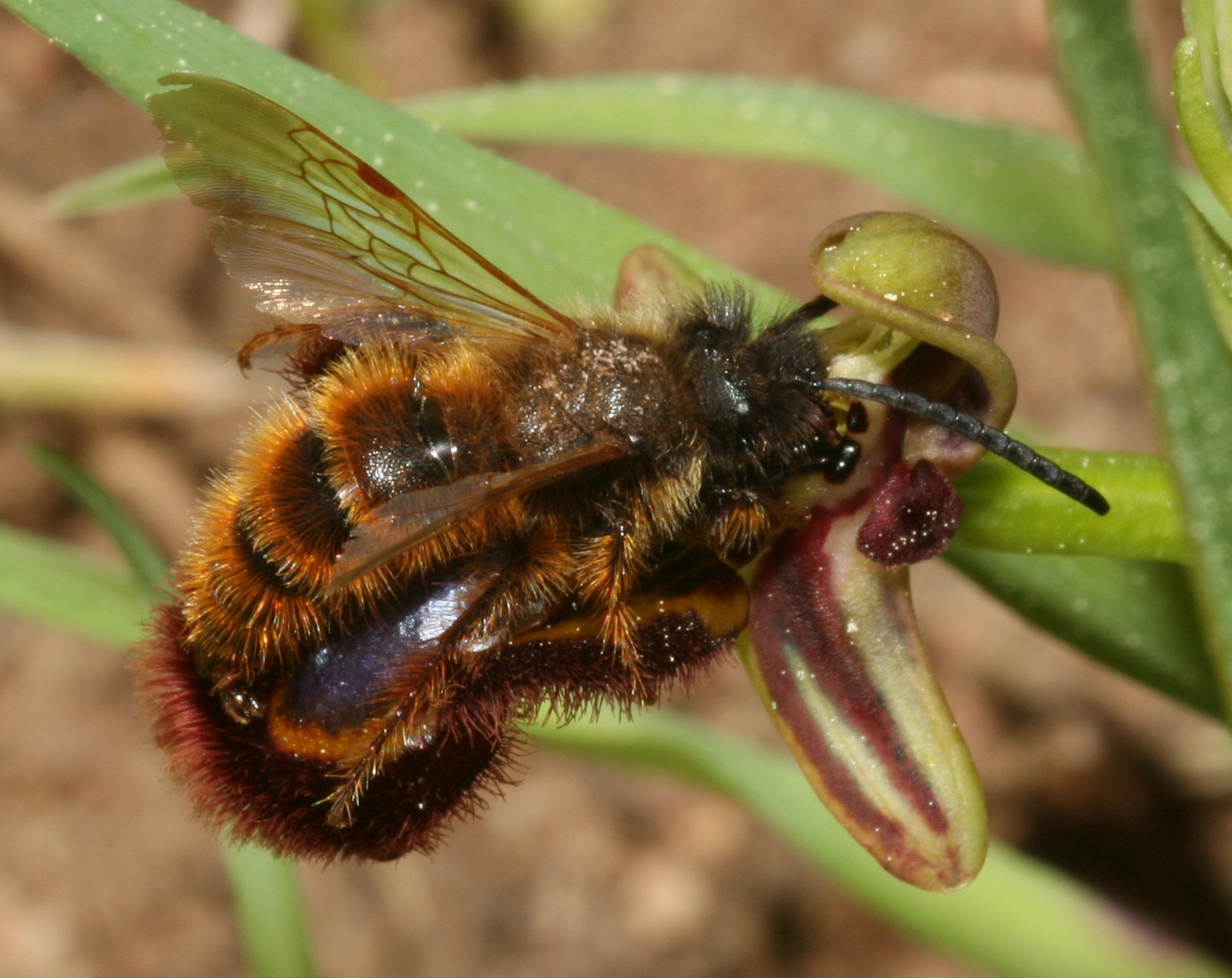|
Mafia Hypothesis
The mafia hypothesis is an explanation of why nesting host species do not reject the eggs of brood parasites. The parasite eggs are accepted by the host to avoid retaliation (egg destruction, nest destruction, and/or the killing of nestlings) by the brood parasite, in an example of coevolution. Amotz Zahavi proposed it in 1979, and it was tested by Manuel Soler in 1995. Mathematical modeling Maria Abou Chakra, of the Max Planck Institute for Evolutionary Biology, with others, successfully mathematically modeled the mafia hypothesis as a viable strategy, conditional on two factors: * hosts are capable of learning * parasites revisit nests They found that the proportion of mafia versus non-mafia brood parasites, and unconditionally versus conditionally accepting hosts cycled over time. If all hosts unconditionally accepted parasite eggs, then it would not be worth the parasite's effort to revisit the nest to conduct a mafia retaliation. If sufficiently few parasites were mafi ... [...More Info...] [...Related Items...] OR: [Wikipedia] [Google] [Baidu] |
Brood Parasite
Brood may refer to: Nature * Brood, a collective term for offspring * Brooding, the incubation of bird eggs by their parents * Bee brood, the young of a beehive * Individual broods of North American periodical cicadas: ** Brood X, the largest brood, which emerges on a 17-year cycle ** Brood XIII, a brood centered on Northern Illinois and its surrounding area, which also emerges on a 17-year cycle ** Brood XIX, a large brood in the Southern United States which emerges on a 13-year cycle People with the surname * Herman Brood (1946–2001), Dutch musician, painter, actor, poet and media personality * Philippe Brood (1964–2000), Dutch politician Entertainment * '' The Brood'', a 1979 horror film directed by David Cronenberg * Brood (comics), an alien species from the Marvel Comics universe * The Brood (professional wrestling) The Brood was a List of professional wrestling terms#Stable, stable known for its time in the WWE, World Wrestling Federation (WWF, now WWE) duri ... [...More Info...] [...Related Items...] OR: [Wikipedia] [Google] [Baidu] |
Host (biology)
In biology and medicine, a host is a larger organism that harbours a smaller organism; whether a parasite, parasitic, a mutualism (biology), mutualistic, or a commensalism, commensalist ''guest'' (symbiont). The guest is typically provided with nourishment and shelter. Examples include animals playing host to parasitic worms (e.g. nematodes), cell (biology), cells harbouring pathogenic (disease-causing) viruses, or a Fabaceae, bean plant hosting mutualistic (helpful) Rhizobia, nitrogen-fixing bacteria. More specifically in botany, a host plant supplies nutrient, food resources to micropredators, which have an evolutionarily stable strategy, evolutionarily stable relationship with their hosts similar to ectoparasitism. The host range is the collection of hosts that an organism can use as a partner. Symbiosis Symbiosis spans a wide variety of possible relationships between organisms, differing in their permanence and their effects on the two parties. If one of the partners in an ... [...More Info...] [...Related Items...] OR: [Wikipedia] [Google] [Baidu] |
Coevolution
In biology, coevolution occurs when two or more species reciprocally affect each other's evolution through the process of natural selection. The term sometimes is used for two traits in the same species affecting each other's evolution, as well as gene-culture coevolution. Charles Darwin mentioned evolutionary interactions between flowering plants and insects in ''On the Origin of Species'' (1859). Although he did not use the word coevolution, he suggested how plants and insects could evolve through reciprocal evolutionary changes. Naturalists in the late 1800s studied other examples of how interactions among species could result in reciprocal evolutionary change. Beginning in the 1940s, plant pathologists developed breeding programs that were examples of human-induced coevolution. Development of new crop plant varieties that were resistant to some diseases favored rapid evolution in pathogen populations to overcome those plant defenses. That, in turn, required the development of ... [...More Info...] [...Related Items...] OR: [Wikipedia] [Google] [Baidu] |
Amotz Zahavi
Amotz Zahavi (; August 14, 1928 – May 12, 2017) was an Israeli evolutionary biologist, a Professor in the Department of Zoology at Tel Aviv University, and one of the founders of the Society for the Protection of Nature in Israel. His main work concerned the evolution of signals, particularly those signals that are indicative of fitness, and their selection for "honesty". Biography Amotz Zahavi was influenced to study zoology by the director of the zoo at Tel Aviv, Heinrich Mendelssohn. He received his Ph.D. from Tel Aviv University in 1970. He was married to Avishag Zahavi, a biologist and a co-investigator. He died in Tel Aviv, Israel on May 12, 2017, aged 88. Scientific career Zahavi is best known for his work on the handicap principle, which explains the evolution of characteristics, behaviors or structures that appear contrary to the principles of Darwinian evolution in that they appear to reduce fitness and endanger individual organisms. Evolved by sexual selection, ... [...More Info...] [...Related Items...] OR: [Wikipedia] [Google] [Baidu] |
Max Planck Institute For Evolutionary Biology
The Max Planck Institute for Evolutionary Biology is a German institute for evolutionary biology. It is located in Plön, Schleswig-Holstein, Germany. History The institute was founded by German zoologist Otto Zacharias as ''Hydrobiologische Station zu Plön''. Working in Italy in the 1880s, Zacharias was inspired by the highly recognised Stazione Zoologica in Naples, founded in 1870 by Anton Dohrn, to set up the first biological station for freshwater research in Germany. He secured financial support from the Prussian government and several private individuals to establish it on Großer Plöner See in 1891, as a private research institute. As the director, Zacharias published research reports from 1893 on the Station's activities, which were recorded from 1905 in the Archives of Hydrobiology. In so-called "summer schools" Zacharias trained teachers and laity interested in working with the microscope. It became part of the Max Planck Society in 1948, and was renamed in 1966 as ... [...More Info...] [...Related Items...] OR: [Wikipedia] [Google] [Baidu] |
Mathematical Model
A mathematical model is an abstract and concrete, abstract description of a concrete system using mathematics, mathematical concepts and language of mathematics, language. The process of developing a mathematical model is termed ''mathematical modeling''. Mathematical models are used in applied mathematics and in the natural sciences (such as physics, biology, earth science, chemistry) and engineering disciplines (such as computer science, electrical engineering), as well as in non-physical systems such as the social sciences (such as economics, psychology, sociology, political science). It can also be taught as a subject in its own right. The use of mathematical models to solve problems in business or military operations is a large part of the field of operations research. Mathematical models are also used in music, linguistics, and philosophy (for example, intensively in analytic philosophy). A model may help to explain a system and to study the effects of different components, ... [...More Info...] [...Related Items...] OR: [Wikipedia] [Google] [Baidu] |
Learning
Learning is the process of acquiring new understanding, knowledge, behaviors, skills, value (personal and cultural), values, Attitude (psychology), attitudes, and preferences. The ability to learn is possessed by humans, non-human animals, and some machine learning, machines; there is also evidence for some kind of learning in certain plants. Some learning is immediate, induced by a single event (e.g. being burned by a Heat, hot stove), but much skill and knowledge accumulate from repeated experiences. The changes induced by learning often last a lifetime, and it is hard to distinguish learned material that seems to be "lost" from that which cannot be retrieved. Human learning starts at birth (it might even start before) and continues until death as a consequence of ongoing interactions between people and their environment. The nature and processes involved in learning are studied in many established fields (including educational psychology, neuropsychology, experimental psycho ... [...More Info...] [...Related Items...] OR: [Wikipedia] [Google] [Baidu] |
Doi (identifier)
A digital object identifier (DOI) is a persistent identifier or handle used to uniquely identify various objects, standardized by the International Organization for Standardization (ISO). DOIs are an implementation of the Handle System; they also fit within the URI system (Uniform Resource Identifier). They are widely used to identify academic, professional, and government information, such as journal articles, research reports, data sets, and official publications. A DOI aims to resolve to its target, the information object to which the DOI refers. This is achieved by binding the DOI to metadata about the object, such as a URL where the object is located. Thus, by being actionable and interoperable, a DOI differs from ISBNs or ISRCs which are identifiers only. The DOI system uses the indecs Content Model to represent metadata. The DOI for a document remains fixed over the lifetime of the document, whereas its location and other metadata may change. Referring to an onl ... [...More Info...] [...Related Items...] OR: [Wikipedia] [Google] [Baidu] |
ISSN (identifier)
An International Standard Serial Number (ISSN) is an eight-digit to uniquely identify a periodical publication (periodical), such as a magazine. The ISSN is especially helpful in distinguishing between serials with the same title. ISSNs are used in ordering, cataloging, interlibrary loans, and other practices in connection with serial literature. The ISSN system was first drafted as an International Organization for Standardization (ISO) international standard in 1971 and published as ISO 3297 in 1975. ISO subcommittee TC 46/SC 9 is responsible for maintaining the standard. When a serial with the same content is published in more than one media type, a different ISSN is assigned to each media type. For example, many serials are published both in print and electronic media. The ISSN system refers to these types as print ISSN (p-ISSN) and electronic ISSN (e-ISSN). Consequently, as defined in ISO 3297:2007, every serial in the ISSN system is also assigned a linking ISSN ... [...More Info...] [...Related Items...] OR: [Wikipedia] [Google] [Baidu] |
PMC (identifier)
PubMed Central (PMC) is a free digital repository that archives open access full-text scholarly articles that have been published in biomedical and life sciences journals. As one of the major research databases developed by the National Center for Biotechnology Information (NCBI), PubMed Central is more than a document repository. Submissions to PMC are indexed and formatted for enhanced metadata, medical ontology, and unique identifiers which enrich the XML structured data for each article. Content within PMC can be linked to other NCBI databases and accessed via Entrez search and retrieval systems, further enhancing the public's ability to discover, read and build upon its biomedical knowledge. PubMed Central is distinct from PubMed. PubMed Central is a free digital archive of full articles, accessible to anyone from anywhere via a web browser (with varying provisions for reuse). Conversely, although PubMed is a searchable database of biomedical citations and abstracts, the f ... [...More Info...] [...Related Items...] OR: [Wikipedia] [Google] [Baidu] |



